Volcano (1997 film)
5.4 /10 1 Votes
Country United States | 5.4/10 IMDb Genre Action, Drama, Sci-Fi Duration Language English | |||||||||||||||||||||||||||||||||
 | ||||||||||||||||||||||||||||||||||
Release date April 25, 1997 (1997-04-25) Screenplay Billy Ray, Jerome Armstrong Cast (Mike Roark), (Dr. Amy Barnes), (Kelly Roark), (Emmit Reese), Joshua Fardon (Medic), (Dr. Jaye Calder)Similar movies Terminator Salvation , Blackhat , Let's Be Cops , 2012 , Cars , Dante's Peak Tagline The coast is toast | ||||||||||||||||||||||||||||||||||
Volcano 1997
Volcano is a 1997 American disaster film directed by Mick Jackson and produced by Andrew Z. Davis, Neal H. Moritz and Lauren Shuler Donner. The storyline was conceived from a screenplay written by Jerome Armstrong and Billy Ray. The film features Tommy Lee Jones, Anne Heche, and Don Cheadle. Jones is cast as the head of the Los Angeles County Office of Emergency Management (LAC OEM) which has complete authority in the event of an emergency or natural disaster. His character attempts to divert the path of a dangerous lava flow through the streets of Los Angeles following the formation of a volcano at the La Brea Tar Pits.
Contents
- Volcano 1997
- Dante s peak 10 10 movie clip the volcano explodes 1997 hd
- Plot
- Cast
- Filming
- Music
- Reception
- Box office
- Home media
- References
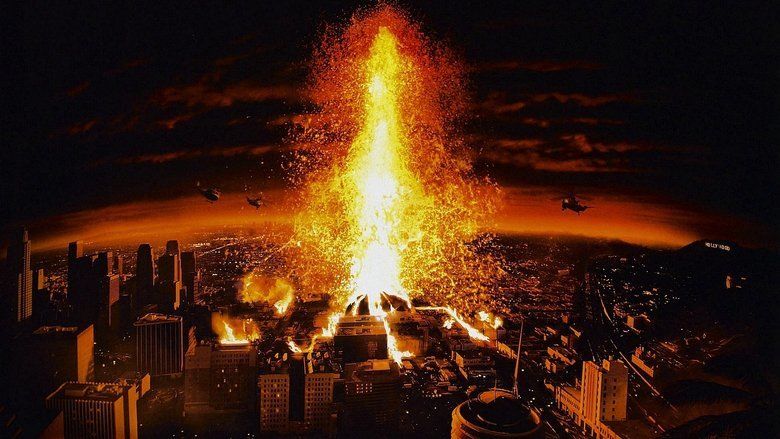
A joint collective effort to commit to the film's production was made by the film studios of 20th Century Fox, Moritz Original and Shuler Donner/Donner Productions. It was commercially distributed by 20th Century Fox. Volcano explores civil viewpoints, such as awareness, evacuation and crisis prevention. Although the film used extensive special effects, it failed to receive any award nominations from mainstream motion picture organizations for its production merits.
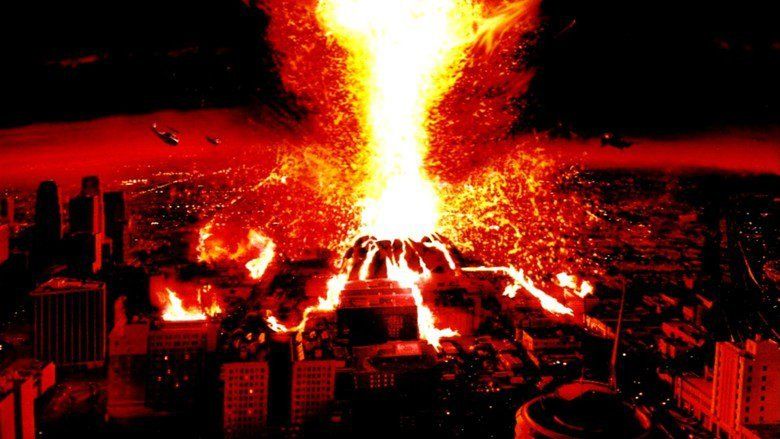
Volcano premiered in theaters nationwide in the United States on April 25, 1997 grossing $49,323,468 in domestic ticket receipts, on a $90 million budget. It earned an additional $73.5 million in business through international release to top out at a combined $122,823,468 in gross revenue. Despite its release and recognition, Dante's Peak (which was released 2 months before) gained more commercial success than Volcano. It was also met with mixed critical reviews before its initial screening in cinemas. The Region 1 code widescreen edition of the film featuring special features was released on DVD in the United States on March 9, 1999.
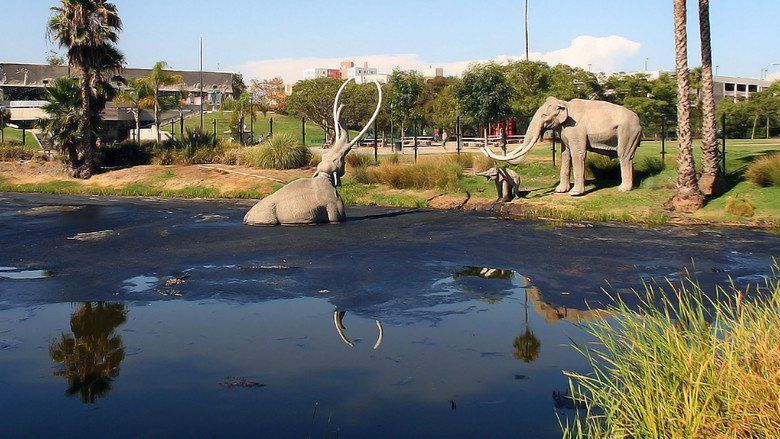
Dante s peak 10 10 movie clip the volcano explodes 1997 hd
Plot
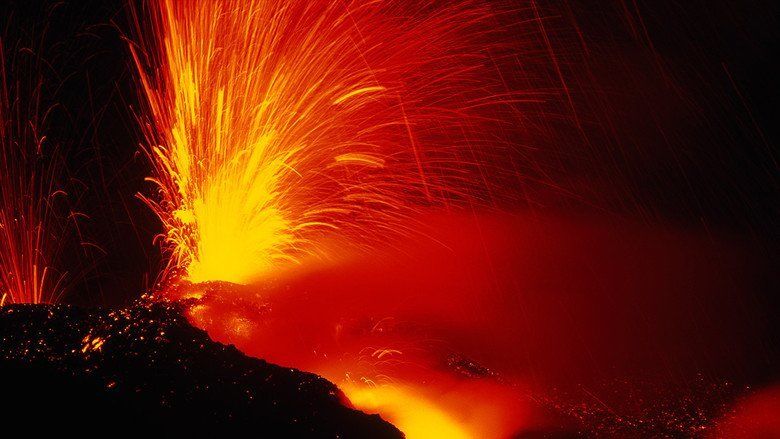
In Los Angeles, an earthquake strikes. Michael Roark, a member of the city's Office of Emergency Management, insists on coming to work to help out with the crisis, although he has been on vacation with his daughter Kelly. His associate, Emmit Reese, notes that the quake caused no major damage, but seven utility workers are later burned to death in a storm drain at MacArthur Park; one escapes and survives, but is severely burned on one side of his face. As a precaution, Roark tries to halt the subway lines, which run parallel to where the deaths took place, but Los Angeles MTA Chairman Stan Olber opposes, feeling there is no threat to the trains. Against regulations, Roark and Gator Harris venture down the storm sewer in the park to investigate. They are nearly burned alive and barely escape with their lives when hot gases suddenly spew out of a crack in the concrete lining and floods the tunnel. Geologist Dr. Amy Barnes believes that an underground volcano may be forming beneath the city with magma flowing underground. Unfortunately, she has insufficient evidence to make Roark take action.

The next morning, at around 5:15 A.M., Barnes, and her assistant, Rachel, venture in the storm sewer to investigate the scene of the incident, where they discover the crack in the ground, which released the gases earlier. While they are taking samples, a more powerful earthquake strikes, and Rachel is killed when she falls into the crack that is engulfed by a rush of the hot gases. Minutes later, in the La Brea Tar Pits, smoke billows out, with lightning crackling from it. Then, lava bombs burst out of the tar pits, which ignites several buildings. Steam explodes from the sewer system, while a subway train derails underground, trapping the passengers inside and exposing them to the severe heat and toxic gases, which causes them all to eventually lose consciousness.
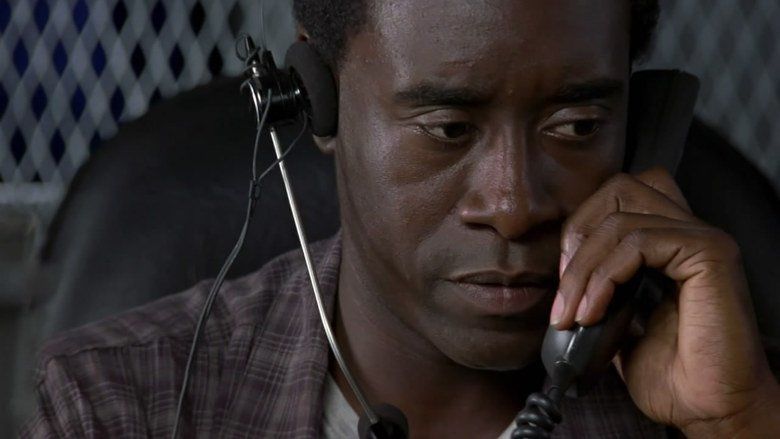
Roark helps injured firefighters out of the area. Moments later, a newly formed volcano erupts from the tar pits, and lava begins to flow freely down Wilshire Boulevard, incinerating everything in its path, including Roark's GMC Suburban, and an LAFD fire truck downed by a lava bomb, killing two firefighters who are trapped inside. Roark and his daughter become separated as she is injured when a nearby lava bomb sputters and burns her leg, and she is taken to Cedars-Sinai Medical Center by Dr. Jaye Calder. Meanwhile, Olber leads his team through the Red Line tunnel to the derailed train, searching for survivors. They manage to save everyone, but Olber notices that the train driver is still missing and goes back; he finds the driver still alive but unconscious, just as the lava reaches the train and begins to flow underneath it. Olber sacrifices his life to save the driver by jumping into the lava flow, throwing the driver to safety as Olber burns to death. Roark, Barnes, and police lieutenant Ed Fox devise a plan to stack concrete barriers at the intersection of Wilshire Boulevard and Fairfax Avenue, creating a cul-de-sac to pool the lava as helicopters dump water on it to form a crust, making the operation a success. Barnes later theorizes that the magma is still flowing underground through the Red Line subway extension, and calculates that the main eruption will occur at the end of the line at the Beverly Center near Cedars-Sinai. To prove this, Barnes and Roark lower a video camera into the tunnel to watch it, only for the camera to be incinerated by a fast-moving flow of lava. They calculate the speed and realize that they have thirty minutes until the lava hits the end of the Red Line.
Through Roark's direction, explosives are used to create channels in the street to divert the flow of lava into Ballona Creek, which will later flow into the Pacific Ocean, but Barnes realizes that the street is sloping in the opposite direction and instead of going in to the creek the lava would flow right into the direction of the injured patients, much to the displeasure of Roark and Fox. Roark devises another plan to demolish a twenty-two story condominium building to block the lava's path from flowing towards the patients and the rest of the Los Angeles West Side. Gator refuses to abandon an LAPD SWAT cop, who has gotten trapped under a core column while slotting explosive charges, just as the lava reaches the dead end of the Subway tunnel extension, and explodes out of the ground in a massive geyser; he sacrifices their lives to detonate the final explosive charge. Roark then spots Kelly nearby, trying to retrieve a small boy who wandered off, putting them in the direct path of the collapsing building. Roark barely manages to save both of them from being crushed as the building collapses. The plan is successful, and the lava flows directly to the ocean. Roark escapes from the wreckage with Kelly and the young child still alive. The death toll is nearly a hundred people, thousands injured, and damages in billions. It starts to rain, with surviving civilians having a sign a relief. Reese shows up with the family dog Max, along with a call from the Chief of the Los Angeles Police Department on how to rebuild the city. Roark tells Reese that he is on vacation after all, and to tell the chief that too, as he goes home with Kelly while Reese takes over to handle the situation.
The film ends with an epilogue displaying a graphic stating that the volcano, named "Mount Wilshire", is still in an active state.
Cast
Filming
Filming was shot primarily on location in Los Angeles, California. Various filming sites included MacArthur Park, Cedars-Sinai Medical Center and the La Brea Tar Pits. Extensive special effects surrounding certain aspects of the film such as the lava flow, were created by ten separate digital effects companies including VIFX, Digital Magic Company, Light Matters Inc., Pixel Envy and Anatomorphex. An 80% full-size replica of Wilshire Boulevard, which was one of the largest sets ever constructed in the U.S., was assembled in Torrance, California. The computer-generated imagery was coordinated and supervised by Dale Ettema and Mat Beck. Between visuals, miniatures, and animation, over 300 technicians were involved in the production aspects of the special effects.
Music
The score for the film was originally composed and orchestrated by musical conductor Alan Silvestri. Recording artists James Newton Howard and Dillinger among others, contributed songs to the music listing. The audio soundtrack in Compact Disc format featuring 8 tracks, was officially released by the American recording label Varèse Sarabande on April 22, 1997. The sound effects in the film were supervised by Christopher Boyes. The mixing of the sound elements were orchestrated by Jim Tanenbaum and Dennis Sands.
Reception
Among mainstream critics in the US, the film received generally mixed reviews. Rotten Tomatoes reports that 44% of 39 sampled critics gave the film a positive review, with an average score of 5.0 out of 10. At Metacritic, which assigns a weighted average out of 100 to critics' reviews, the film received a score of 55 based on 22 reviews. In 1997, the film was nominated for a Golden Raspberry Award in the category of "Worst Reckless Disregard for Human Life and Public Property" , but lost to Con Air.
Janet Maslin, writing in The New York Times, said, "Volcano begins so excitably and hurtles so quickly into fiery pandemonium," but noted that "in the disaster realm, it's not easy to have it all. A film this technically clever can't get away with patronizing and familiar genre cliches." Roger Ebert in the Chicago Sun-Times called it a "surprisingly cheesy disaster epic" while musing, "The lava keeps flowing for much of the movie, never looking convincing. I loved it when the firemen aimed their hoses way offscreen into the middle of the lava flow, instead of maybe aiming them at the leading edge of the lava—which they couldn't do, because the lava was a visual effect, and not really there." In the San Francisco Chronicle, Mick LaSalle wrote that "Things go bad after Volcano plays its last card — the lava — and from there it has nothing to show but more of the same. A host of characters is introduced in the opening scenes, but Volcano doesn't know what to do with them. It can't make us care." Owen Gleiberman of Entertainment Weekly said, "Volcano is cheese, all right, but it's tangy cheese. I'm not sure I've ever seen a disaster movie in which special effects this realistic and accomplished were put to the service of a premise this outlandish." He declared: "Volcano is jittery in a clinical, self-important way." Walter Addiego of the San Francisco Examiner, felt "Volcano offers a bit of humor, a minimum of plot distraction and the joys of watching molten rock ooze down Wilshire Boulevard." Left equally impressed was James Berardinelli of ReelViews. Commenting on the character significance of Mike Roark, played by Jones, he said it was "a wonderfully heroic figure — a man of action who never has time to rest. The fate of the city rests on his shoulders, and he knows it. Jones' fierce, unflagging portrayal helps us accept Roark not only as the man to save L.A., but as a loving father who is more concerned about his daughter's safety than that of every other citizen." In his summation, he wrote, "Volcano has opened the "summer" movie season at an astoundingly early late-April date. But there's no mistaking this as anything but a blockbuster trying to get a running jump on competition like The Fifth Element and The Lost World. This isn't the kind of film where it's worth waiting for the video tape — it's too big and brash, and demands the speakers and atmosphere of a state-of-the-art theater." Kenneth Turan of the Los Angeles Times added to the positive sentiment by saying the film "glows with heat. Lava heat. The coast may be toast, but it's the lava, covering everything like a malevolent tide of melted butter, that makes this a disaster picture that's tastier than usual."
Writing for Time Out, author TCh said, "The most striking aspect of this fun, old-fashioned disaster movie is the novelty of seeing the most familiar of backdrops used as a creative resource in its own right." He commended how "Jones and Heche work hard to dig up an emotional rapport from next to nothing" while also praising how the "slow but inexorable progress of the lava makes for more suspense than the usual slam bang firework display." Not entirely impressed was Margaret McGurk writing for The Cincinnati Enquirer. She called the film "depreciating entertainment value of the natural-disaster trend" while also mentioning how the "High-caliber special effects are still fun, but all this lock-step storytelling is wearing thin." But in a hint of commendation, McGurk thought "on its own escapist terms, Volcano dishes up a textbook serving of low-I.Q., high-energy entertainment." Describing a comical position on seismic activity, Marc Savlov of The Austin Chronicle said Volcano was a "laughably ridiculous take on what we all secretly dream of: Los Angeles, washed away in a huge, molten tide of cheese — uh, lava, I mean." Savlov added, "Screenwriters Jerome Armstrong and Billy Ray have crammed the script with topical references to the L.A. riots, Rodney King, racial inequality, sexism, the ineffectuality of the 911 system, and reams of very, very bad dialogue. So bad, in fact, that the screening audience I viewed Volcano with seemed to enjoy it immensely, hooting and hollering and laughing as though it were an old episode of Mystery Science Theater 3000."
Rita Kempley of The Washington Post, openly wondered why "there's no volcano in "Volcano"?...The hokey disaster drama features towering plumes of smoke, a splendid display of fireworks and brimstone, and rivers of molten magma, but I'll be darned if there's a burning mountain." She concluded her review by declaring that "While disaster yarns aren't known for subtlety, there are limits, and Volcano giddily goes beyond them. Director Mick Jackson, who also made Steve Martin's wry "L.A. Story," must have had his hands full with the logistics of this bombastic extravaganza. He sets a blistering pace, but the movie never generates any real thrills." Todd McCarthy of Variety was more positive, writing Volcano delivered "enough spectacular action to get it off to a hot B.O. start" and that "first-time screenwriters Jerome Armstrong and Billy Ray waste no time with exposition or scene-setting, starting the fireworks with a nerve-jangling morning earthquake that puts city workers on alert for possible damage."
Box office
Volcano premiered in cinemas on April 25, 1997. At its widest distribution in the U.S., the film was screened at 2,777 theaters. The film grossed $14,581,740 in box office business averaging $5,256 in revenue per theater in its opening weekend. During that first weekend in release, the film opened in first place beating out the films Romy & Michelle's High School Reunion and Anaconda. The film's revenue dropped by 37% in its second week of release, earning $9,099,743. In the month of June during its final weekend showing in theaters, the film came out in 12th place grossing $602,076. The film went on to top out domestically at $49,323,468 in total ticket sales through a 7-week theatrical run. Internationally, the film took in an additional $73,500,000 in box office business for a combined total of $122,823,468. For 1997 as a whole, the film would cumulatively rank at a box office performance position of 39.
Home media
Following its cinematic release in theaters, the film was released in VHS video format on May 26, 1998. The Region 1 Code widescreen edition of the film was released on DVD in the United States on March 9, 1999. Special features for the DVD include interactive menus, scene selection and the original theatrical trailer. It is not enhanced for widescreen televisions. The film was released on Blu-ray Disc on October 1, 2013 by Starz/Anchor Bay.
References
Volcano (1997 film) WikipediaVolcano (1997 film) IMDb Volcano (1997 film) themoviedb.org
